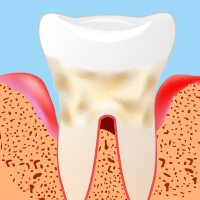Restorative Treatment
Porcelain Crowns (Caps)
A crown (or cap) is a covering that encases the entire tooth surface restoring it to its original shape and size. A crown protects and strengthens tooth structure that cannot be restored with fillings or other types of restorations. Although there are several types of crowns, porcelain (tooth colored crown) are the most popular, because they resemble your natural teeth.
They are highly durable and will last many years, but like most dental restorations, they may eventually need to be replaced. Porcelain crowns are made to match the shape, size, and color or your teeth giving you a natural, long-lasting beautiful smile. [su_spacer size=”10″]
Reasons for crowns:
- Broken or fractured teeth.
- Cosmetic enhancement.
- Decayed teeth.
- Fractured fillings.
- Large fillings.
- Tooth has a root canal.
What does getting a crown involve?
Depending on the type of crown & the location of the tooth, a crown procedure may require two appointments. Your first appointment will include taking several highly accurate molds (or impressions) that will be used to create your custom crown. A mold will also be used to create a temporary crown which will stay on your tooth for approximately two weeks until your new crown is fabricated by a dental laboratory. While the tooth is numb, the dentist will prepare the tooth by removing any decay and shaping the surface to properly fit the crown.
Once these details are accomplished, your temporary crown will be placed with temporary cement and your bite will be checked to ensure you are biting properly. At your second appointment your temporary crown will be removed, the tooth will be cleaned, and your new crown will be carefully placed to ensure the spacing and bite are accurate. Our office also offices CEREC in office crowns, which are done in just one visit. You will be given care instructions and encouraged to have regular dental visits to check your new crown.
[su_spacer size=”20″]
Bridges
Also called a Fixed Partial Denture, this restoration is used to replace a missing tooth by joining or “bridging” the teeth on either side of the missing tooth, called “abutment” teeth.
The abutment teeth are prepared to accommodate the material used to restore the missing tooth. This is a two-appointment procedure as it takes the lab a few weeks to fabricate the final bridge restoration. In the meantime, an acrylic temporary bridge is placed.
[su_spacer size=”20″]
Treatment for Gum Disease
Also known as “periodontal disease” this is a process caused by long-term build up of plaque and tarter that leads to the recession of gum tissue and loss of bone surrounding and supporting the teeth. If left untreated, periodontal disease will cause loosening and the eventual loss of teeth.
Plaque is full of microorganisms (bacteria). This sticky bio-film will remain attached to the teeth for around 24 hours before it is calcified and turns into a hard material called tarter. Tarter build up around teeth will attract more plaque and eventually grow in size causing the gums and bone to recede.
This process can be stopped early (before the tarter builds up below the gum-line) by brushing, flossing and regular dental cleanings. If the build up of tarter extends below the gum-line, more aggressive treatment, such as Scaling and Root Planning or Periodontal Surgery may be needed.
We eat food every day and not all of us are fastidious about keeping our teeth cleaned; everyone has gum disease to some extent. To determine the extent of gum disease and the appropriate treatment, you will need to have a complete examination with a full set of radiographs. It is important to know that periodontal disease is painless until near the end. Its very similar to high blood pressure; prevention and being pro-active is the BEST way to treat gum disease!
[su_spacer size=”20″]
Dental Implants
Implants are a wonderful option for replacing missing teeth, whether they be single teeth, multiple teeth or the entire dentition. Implants are also an excellent way to secure complete dentures from “flopping around” in the mouth. Implants are an excellent alternative to bridges and partials for missing teeth because they feel and work most like our natural dentition. Implants are biocompatible titanium anchors that are positioned in the jaw bone underneath the gums. They are usually done in two phases; first you will see an oral surgeon to have the implant placed. After a few months of healing, we will fit a custom restoration on top of the implant post to replace your missing tooth or teeth. Every case is different, so you should ask Dr. Beck if you have any specific questions about your own mouth and dental implants.
[su_spacer size=”20″]
Endodontic Therapy “Root Canals”
The root of a tooth encloses the nerve (pulp) and blood vessels which provide vitality and hot/cold sensations. When tooth decay (caries) or trauma of tooth structure (such as fracture or long term grinding) reach the pulp, the tissues become irreversibly inflamed and the nerve (pulp) dies. When this happens there are only two choices for treatment: pull the whole tooth or keep the tooth and remove the diseased pulp tissue.
Endodontic or “root canal” therapy is a procedure that removes the infected pulp tissue, cleans and disinfects the inside chamber and seals it up with an inert material preventing further infection. It is very important to know that almost every tooth that has had endodontic therapy will need a crown placed to keep it from fracturing and having to be extracted. The reason; accessing the pulp chamber and removing the pulp tissue and reshaping the canal weakens the tooth and a crown reinforces the structural integrity and provides for normal esthetics and function. To learn more about root canal treatment, click here.
[su_spacer size=”20″]
Fillings
Composite restorations (or white fillings) are a restoration that are composed of acrylic plastics and quartz fillers. These restorations differ from amalgam (silver or mercury) fillings in that they are held in place by a bonded resin rather than mechanical retention.
These materials have evolved to the point that they will last as long and are as durable as silver fillings. This is just the basics, there is so much more to restoring your teeth properly. Your dentist in Portland Oregon, Dr. Todd Beck will be happy to go over all your options and help you decide the best material to restore your teeth.
[su_spacer size=”20″]
Oral Surgery
There are times when a tooth cannot be restored due to extensive decay or trauma. When this is the case, the tooth must be extracted. Depending on location and the extent of damage to the tooth, a surgical approach may be necessary.
After the area is thoroughly anesthetized, the gum tissue is reflected and bone removed from around the remainder of the tooth to facilitate its removal. The surgical area is cleaned and the gum tissue sutured back into place to allow complete healing.
[su_spacer size=”20″]







